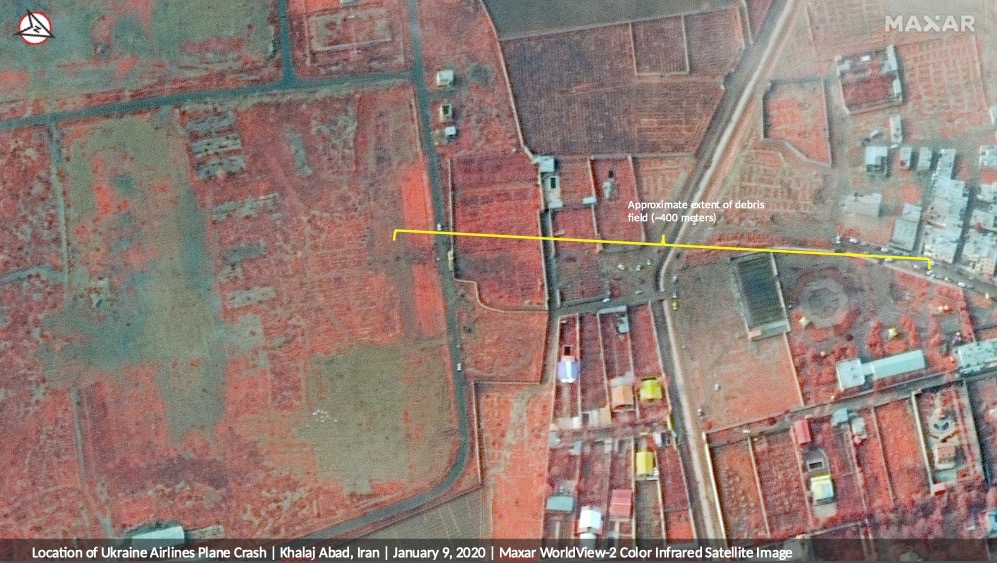
Sharp-eyed satellites have spotted debris from the Ukrainian airliner that went down in Iran early Wednesday morning (Jan. 8).
The photos were snapped yesterday (Jan. 9) by the WorldView-1 and WorldView-2 satellites, which are operated by DigitalGlobe, a subsidiary of Colorado-based Maxar Technologies.
Both of these spacecraft can capture imagery with a resolution of about 18 inches (50 centimeters), though they fly at different altitudes. WorldView-1, which launched in 2007, circles Earth about 310 miles (500 kilometers) up; WorldView-2, which was lofted in 2009, orbits 480 miles (770 km) above our heads.
Related: Photos: Amazing Images of Earth from Space

The plane, a Boeing 737 operated by Ukraine International Airlines, crashed shortly after taking off from Imam Khomeini International Airport in Tehran, the capital of Iran, on a planned flight to Kiev, the capital of Ukraine. All 176 people on board were killed.
Officials in the United States and allied countries have said that it appears Iran shot down the plane, perhaps mistaking it for an enemy craft in a "fog of war" scenario.
Tensions between Iran and the U.S. have been high since an American drone strike killed top Iranian general Qasem Soleimani last week. Iran retaliated Tuesday night (Jan. 7), striking with missiles two Iraqi sites that house U.S. troops (though these attacks caused no casualties, U.S. officials said). The passenger plane crashed just hours after those missile strikes were launched.
Get the world’s most fascinating discoveries delivered straight to your inbox.
Iranian officials have denied responsibility for the plane crash, claiming that the U.S. is "spreading lies" about the intelligence that pins the blame on the regime, according to CBS News.
- Iran in Space: Rockets, Satellites & Monkeys (Photos)
- DigitalGlobe Releases First Photo from WorldView-4 Satellite
- Earth From Space: Amazing Astronaut Photos
Mike Wall's book about the search for alien life, "Out There" (Grand Central Publishing, 2018; illustrated by Karl Tate), is out now. Follow him on Twitter @michaeldwall. Follow us on Twitter @Spacedotcom or Facebook.





